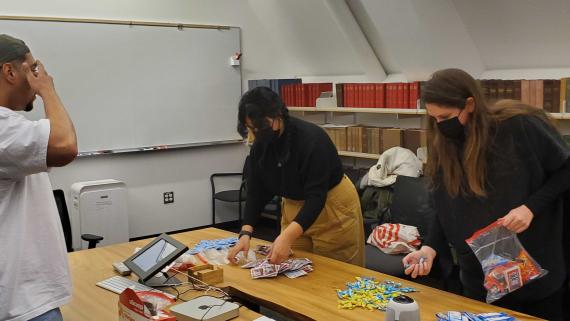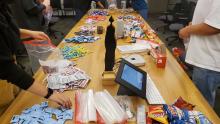For many students coming to Seattle for the first time, the visibility of homelessness here is a major shock. Personal reflections on homelessness rarely delve beyond the initial reaction, but a course called the Sociology of Homelessness gives students the space to investigate and reflect. Students challenge their deeply held assumptions about homelessness, learn about the historical and social factors that contribute to its perpetuation, and explore a variety of community responses.
When asked if there was one thing she wished people knew about homelessness, PhD student Lindsey Beach, who led the course this past winter, named the extreme difficulty and complexity of homelessness. This includes both the experience of being unhoused, as well as the challenges of transitioning out of homelessness. “It’s important for understanding why people might sometimes appear resistant to getting support. If we think about our own lives, what does it take for you to make a big change or get a habit to stick? How would that be affected by an unstable daily environment with low support?”
The course was broken up into three parts. The first part went into the structural factors that contribute to homelessness—whether it is discrimination, poverty, housing, and law—and why some places have higher rates of homelessness than others. Students looked at the history of homelessness, patterns of mental illness and addiction in the homeless community, and how racism shapes one’s relationship to a city. The second part examined the different societal reactions to homelessness, like criminalization, medicalization, or charity. The third and final part looked at different responses to the crisis, which ranged from city-funded supportive housing programs to unhoused people self-organizing to get their needs met.
On a Thursday afternoon before finals week, the students gathered in Savery 409 to fill 40 bags with snacks, toiletries, and other small essentials for their unhoused neighbors in the nearby Tiny House village and in Tent City 3. At this point in the course, students were critical of the charity model and its limitations to addressing the systemic causes of homelessness. But they were also reflective on the small but significant purpose of giving gifts and material kindness to members of the community experiencing barriers in meeting their needs. Visiting both locations allowed students to see their learning in context. “I found it really interesting during the Tiny House tour to hear about the emotional barriers people have for coming inside,” one student wrote in reflection. “In light of such feelings of ostracization, it’s understandable that some folks would prefer to remain in an exclusively homeless street community rather than subject themselves to the myriad of judgements of the housed.”

Another student said of their self-appointed tour guide of Tent City 3: “She told us about personal experiences and dredged up a lot of pain. I respected her a lot for that. She said that it's important to interact with visitors and the community in order to combat some of the stereotypes and negative attitudes about Tent City 3 and visible homelessness. It's sad that she has to relive and explain her traumatic experiences in part in order to emphasize to people that their stereotypes are inaccurate.”
It’s an enormous topic to tackle in ten weeks, but SOC 401B takes into consideration where many students are coming from. It invites them to bring this new knowledge and context about homelessness into their own communities to ask important questions about how our values are shaped and challenge those familiar assumptions.
